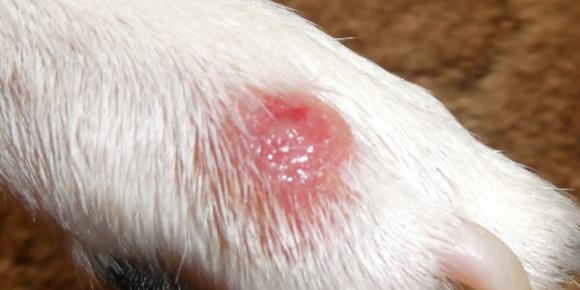Does My Pet Really Need that Skin Test?

- posted: Jan. 05, 2020
Does my Pet Really Need that Skin Test?
Skin problems are relatively common in dogs and cats and can be caused by a variety of things. Your vet may need to do a few simple tests in order to narrow down the cause and properly treat your pet. Here, we discuss three common tests for skin problems.
- Skin scraping—a scraping of the skin with the side of a dull scalpel blade is usually performed if we suspect your pet may have mites. There are several types of mites that live in the skin—the two most common are Demodex and Sarcoptes. Demodex can cause patches of hair loss and sometimes itching. Sarcoptic mange mites can cause hair loss with intense itching and redness of the skin. Occasionally, mites are difficult to find, but in most cases we will see them with a skin scrape test.
- Tape Prep or impression smear—if a pet has dry flaky lesions on the skin, a piece of clear tape may be pressed onto the skin to pick up any yeast or bacteria on the surface. This tape is then stained and examined under the microscope to look for organisms. If the skin lesion is wet or oozing, a clean glass slide may be pressed directly onto the skin to collect cells and exudate to stain and examine under the microscope. It is important to distinguish between bacterial vs. yeast (fungal) infection on the skin as the treatments differ. An antibiotic is needed for bacterial infection but will not cure yeast. An antifungal drug is needed for yeast or fungal infection. Incorrect treatment can delay healing.
- Ear smear—an ear smear is needed when treating a suspected ear infection. A cotton swab is placed in the ear removing some of the wax and debris from the ear canal. This material is examined under the microscope and allows us to see whether the pet has yeast, bacteria or ear mites and how many organisms are present. A follow up exam in 2-4 weeks allows us to swab the ears again to gauge the response to treatment. If fewer or no organisms are found, treatment is successful.
A few other tests are sometimes performed when a pet presents with a skin problem. Cultures of bacterial infections are sometimes performed to identify the exact bacteria and to tell us which specific antibiotics will kill the bacteria. A ringworm test may be done if ringworm fungus is suspected. A few hairs are plucked from the affected skin and put on a special gel plate that will change color if ringworm fungi are present. If a pet has a lump or swelling, a needle may be inserted into the lump to try to obtain cells or fluid for analysis. This is known as a fine needle aspirate. The cells or fluid are squirted onto a slide and stained then examined under the microscope. Slides may also be sent to an outside lab for a pathologist to review.
These tests are important diagnostic tools in helping vets determine the cause of your pet’s skin problem and tailoring treatment to make sure any infection clears up which will make your pet more comfortable. Hopefully, this explains the importance of these tests and why we need to do them.
This blog brought to you by the Patton Veterinary Hospital serving Red Lion, York and the surrounding communities.
Location
Patton Veterinary Hospital
425 E Broadway
Red Lion, PA 17356
